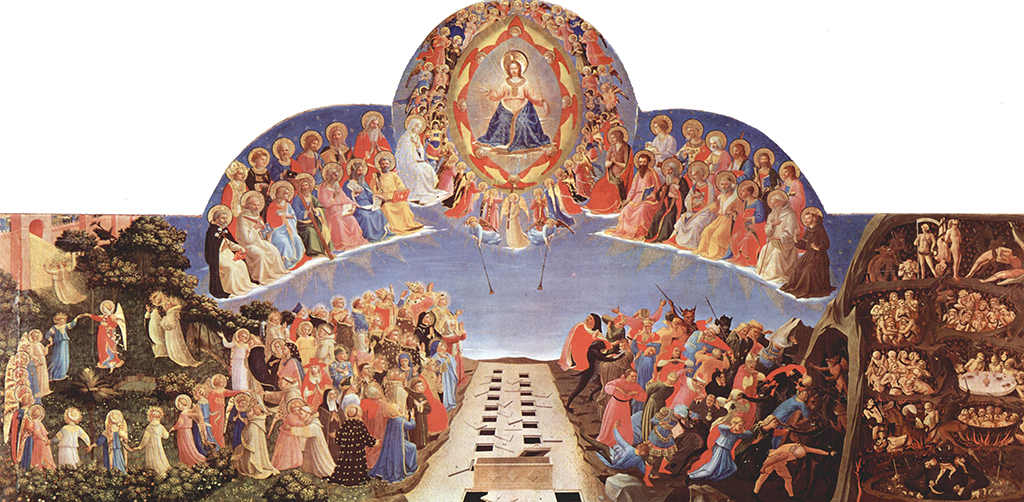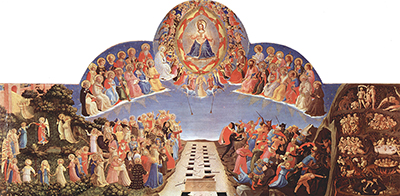The Last Judgement - a powerful and emotive scene from Christian teachings which appears on multiple occasions within the Renaissance.
This artwork is dated at 1425–1430, though it would not have taken five years to complete if worked on full time. Fra Angelico was very much a man in demand during the 1420s and 1430s, requiring help from his assistants to deal with an endless supply of commissioned work. The likely explanation is therefore that either it was completed during this period over a shorter amount of time or that he and his studio were covering many projects during this period.
Fra Angelico also completed another version on this theme which is held in the Gemäldegalerie in Berlin, making it one of the few paintings from his career to now be on display within Germany. Producing several versions along the same theme was nothing new to this artist, nor others from this period. For example, he produced two versions of the Coronation of the Virgin, with one now in the Louvre and one in the Uffizi.
Within this depiction the artist places Jesus Christ, the Son of God, in a prominent position at the top of the panel, centered and overlooking everyone else in this composition. Symbolically, the Judgement requires him to look over all others and pass his decision on each individual. For the purposes of simplicity and visual impact most artists would separate the two groups of approved and rejected individuals into two areas of the canvas and Fra Angelico does precisely the same here. The division symbolises the living and dead as Christ points the figures towards either Heaven or Hell, depending on how he viewed their behaviour within the present world.
The Last Judgement, from the perspective of artistic depictions, will always be linked most closely to Michelangelo's Last Judgement which sits above the altar in the Sistine Chapel. Beyond this, there have been many artistically breathtaking examples from other artists that have perhaps been overshadowed by this Renaissance master's version. Beyond the versions delivered by Fra Angelico and Michelangelo there are also a highly notable contibution on this theme from Hieronymus Bosch with his The Last Judgment triptych.





